June 2018 Edition
2,000 Construction Jobs and Counting
A major milestone was crossed this month by the high-speed rail program as we celebrated creating the 2,000th construction job in the Central Valley.
“This project milestone represents significant progress on the nation’s first high-speed rail system,” said Chief Operating Officer Joe Hedges. “Once we expand out from the Valley to the north and the south, there are going to be hundreds of major structures that will need to be built, creating thousands of jobs and new opportunities.”
Since the start of construction in 2013, men and women from across the state have been dispatched to relocate utilities, abate and demolish structures, drill columns 80 feet into the ground and place girders on mega structures near the San Joaquin River.
For many of these workers, the opportunity to work on high-speed rail has been life-changing. Both apprentice ironworker Desrae Ruiz and her husband work on the project. She says before coming on she was working in retail and it just wasn’t providing enough for the couple and their daughter. Now she says they are able to reach goals they weren’t ever sure would be possible.
“It’s helping us a lot, it’s helping me get our house for the first time, helping me finish paying off my truck and we’re working on getting me back to school so I can reach another goal,” says Ruiz.
Apprentice ironworker Jonathan Abril shares a similar story. “Before I became an ironworker it was a check to check sort of thing, but now I’m able to save and do better for myself. Hopefully in the close future I can buy a house.”
Others who have been working the trades for years say the project is not only providing for their family financially, but also creating more time to be a family by allowing people who live in the Central Valley to work in their backyard.
“I worked seven years in LA, I worked in the Bay Area four or five years off and on, hit and miss everywhere, you know?” says journeyman rodbuster Manuel Vega. “They say for the next seven years I’ll be close to home. Can’t beat it, can’t beat it all. It’s a great feeling.”
These workers represent 21 union halls with the same goal of building the first high-speed rail system in the nation. High-speed rail will transform transportation in this state, but it is already transforming the lives of 2,000 construction workers and counting.
“It’s a good paying job, it puts a lot of people to work, if this wasn’t here all these people wouldn’t be working,” adds retired Navy investigator and now journeyman piledriver Laryl Helberg.
Updates Per Project
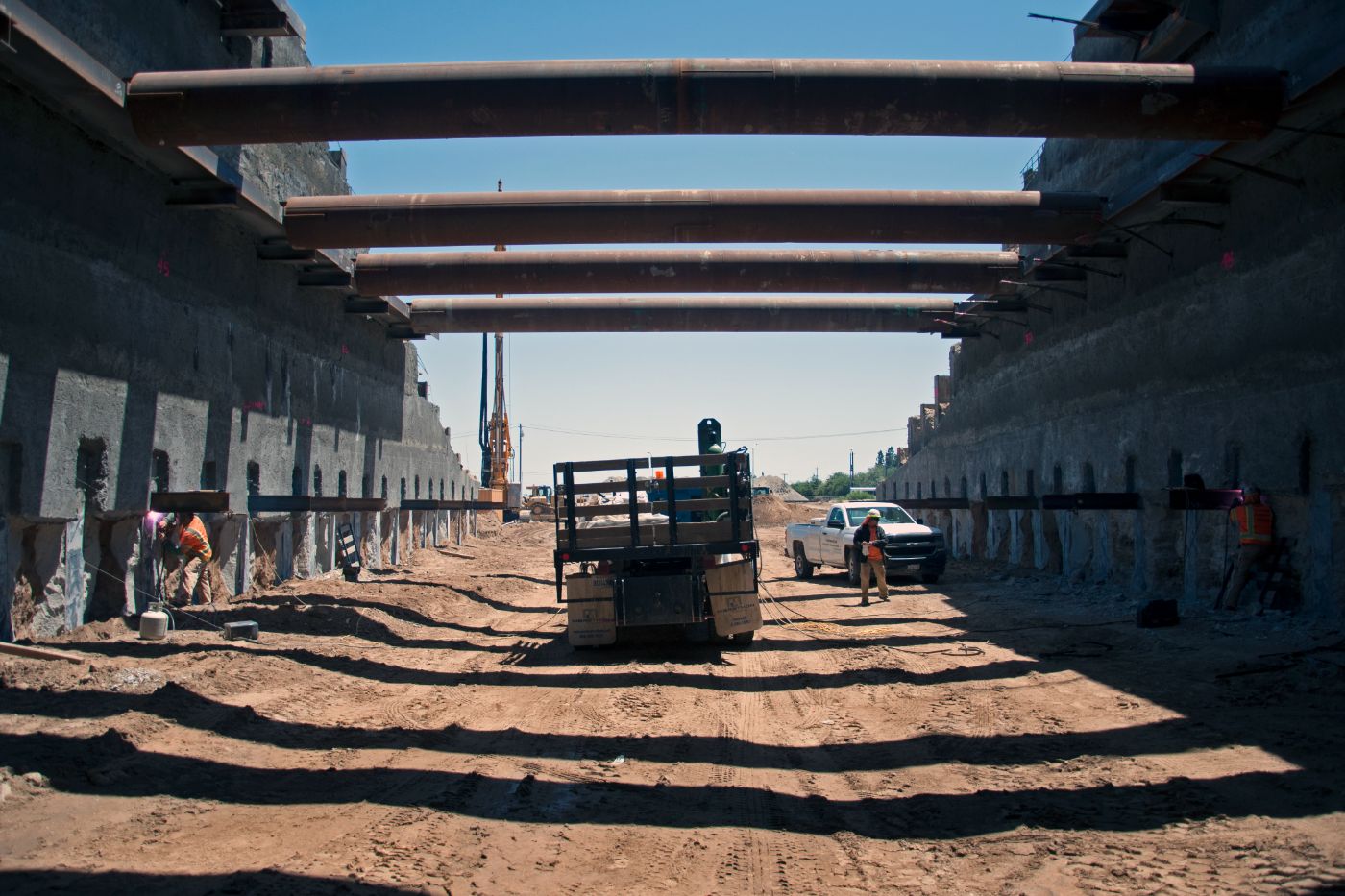
Fresno Trench & State Route 180 Passageway
At the Fresno Trench beneath State Route 180 (SR 180), construction begins on multiple elements of the trench. The excavation and shotcrete operation beneath SR180 is ongoing. Crews have excavated approximately 40 feet below the top of the freeway. To the north of SR 180, craftworkers are busy constructing the intrusion barrier walls. The barrier wall will separate the high-speed rail alignment from the existing freight rail that parallels the project. The wall will be 10 feet tall, three feet thick and extend nearly 1,200 feet in this area of the project and nearly 20,000 feet project wide. When complete, the trench will cross under SR 180, a rail spur and the Dry Creek Canal.
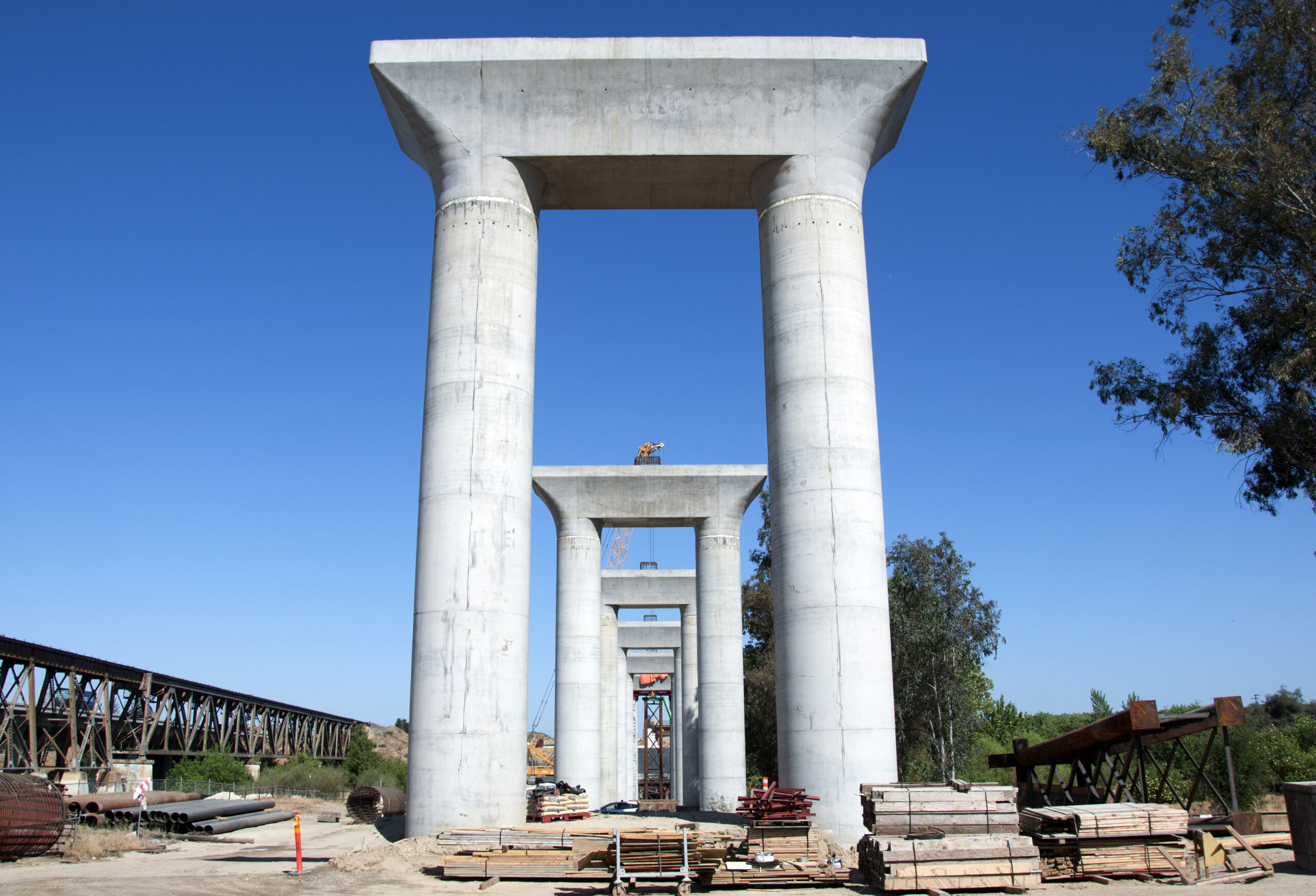
San Joaquin River Viaduct
On the south side of the San Joaquin River, crews are finishing up construction of pier caps to tie together the support columns. The cast-in-place construction of the deck that will carry high-speed trains is also progressing, as it links all the structures together. On the north side of the river, other crews are working on the structures where the viaduct will tie-in to embankment. The completed viaduct will form one of the largest structures on this first phase of the high-speed rail project.
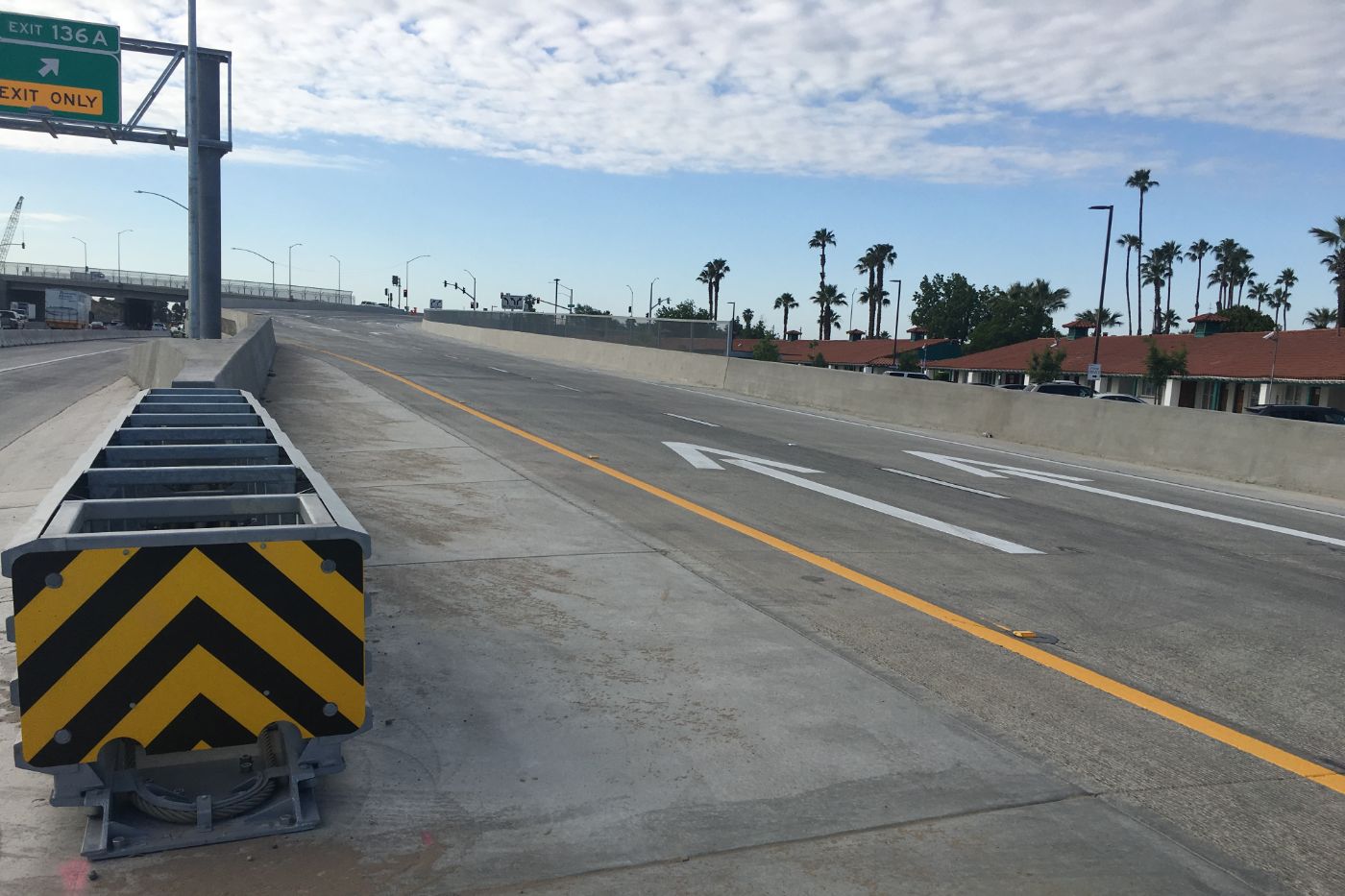
State Route 99 Realignment
The southbound State Route 99 Clinton Avenue and Golden State Boulevard off-ramps are now open to traffic. Work is continuing on the northbound Clinton Avenue on-ramp, which is scheduled to open when northbound traffic on SR 99 is switched to the new highway alignment in the coming weeks. At the Ashlan Avenue Bridge, crews are continuing to form and subgrade the bent caps for the structure’s abutments. Falsework construction for the new bridge has also begun. A portion of SR 99 is being realigned about 100 feet to the west to make way for the high-speed rail alignment.
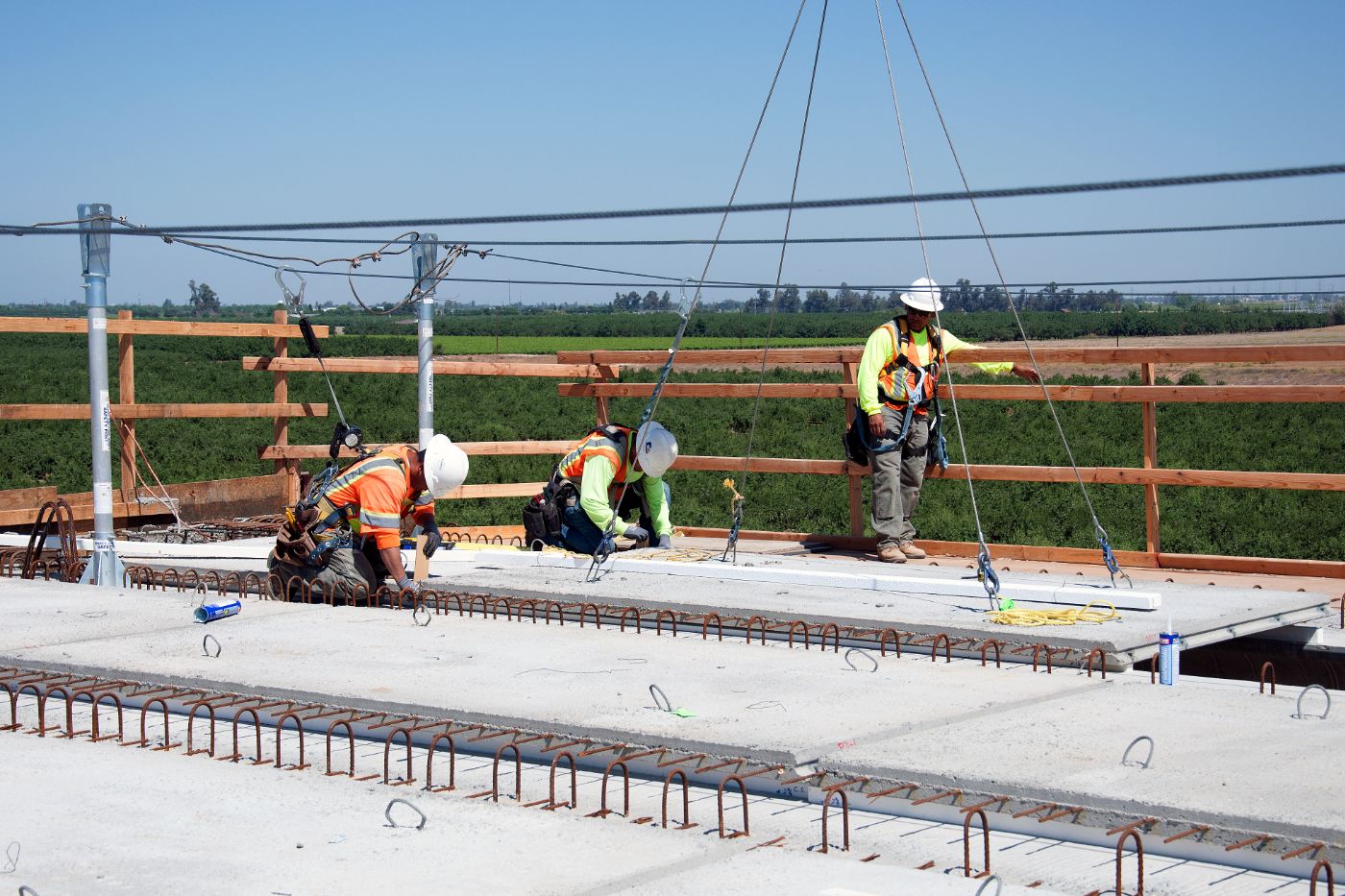
Avenue 11 Grade Separation
At Avenue 11, just east of Road 30 ½, the abutments for the overpass have been completed and bridge girders have been set. Crews are now beginning to form the bridge deck for this structure, which will take traffic over the high-speed rail alignment. A crane is seen lifting pre-cast concrete bridge deck panels onto the structure where they are carefully guided into place. Once the deck panels have been installed, the ironworkers will lay the deck steel. Next, carpenter and laborer crews will move in to form the edge of the deck and prepare for a concrete pour. Other crews have finished the block walls, which will retain the earthen embankment extending from the abutments.
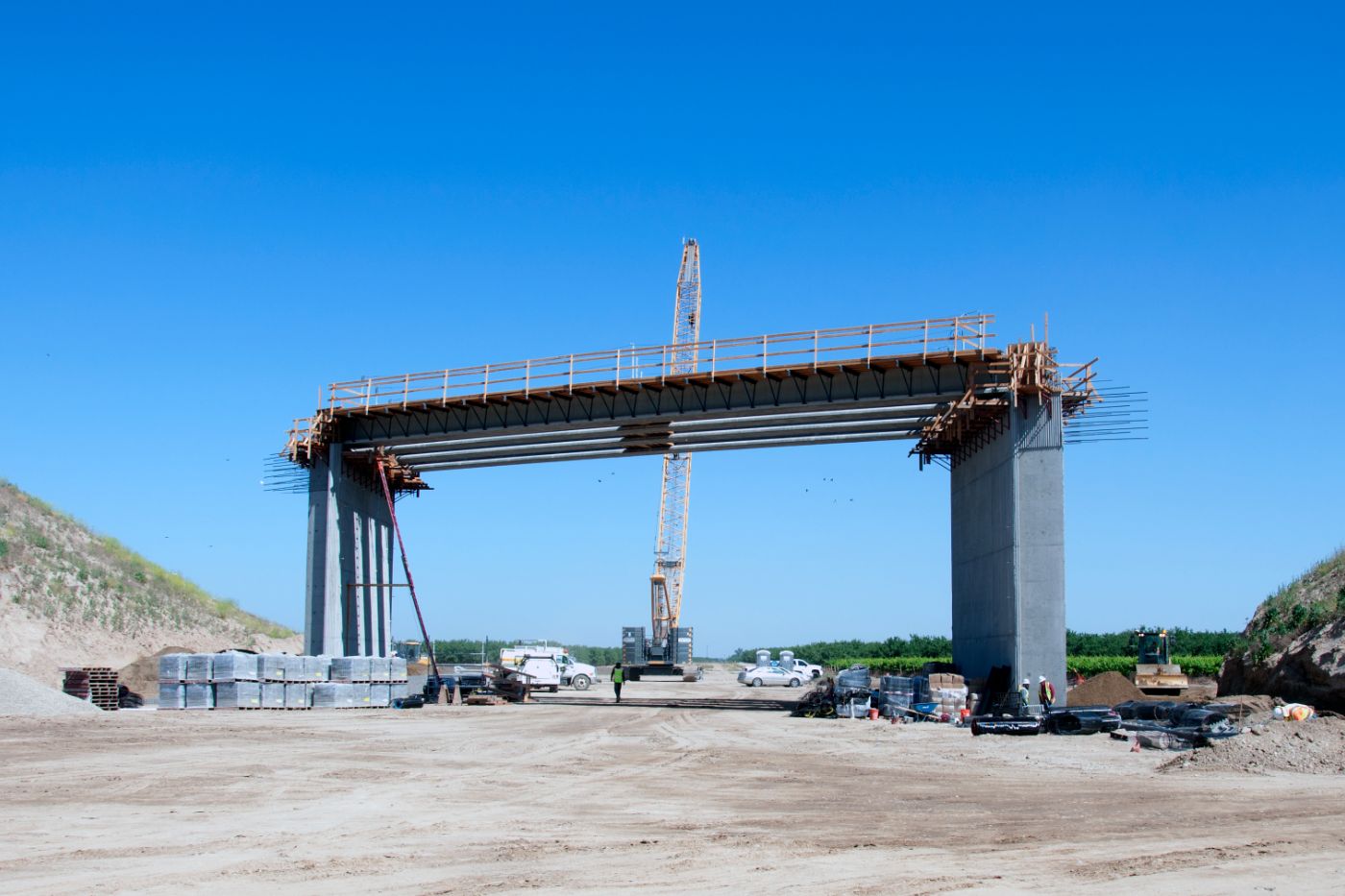
Avenue 8 Grade Separation
Girders have been set for the single span bridge at Avenue 8, which crosses the high-speed rail alignment east of State Route 99 in Madera County. The block wall leveling pads have been poured and fill-dirt is being compacted as the MSE blocks are being set for the retaining walls. Crews are currently forming and installing steel for the bridge diaphragms. Diaphragms stabilize the girders permanently and help improve load sharing of the bridge elements.
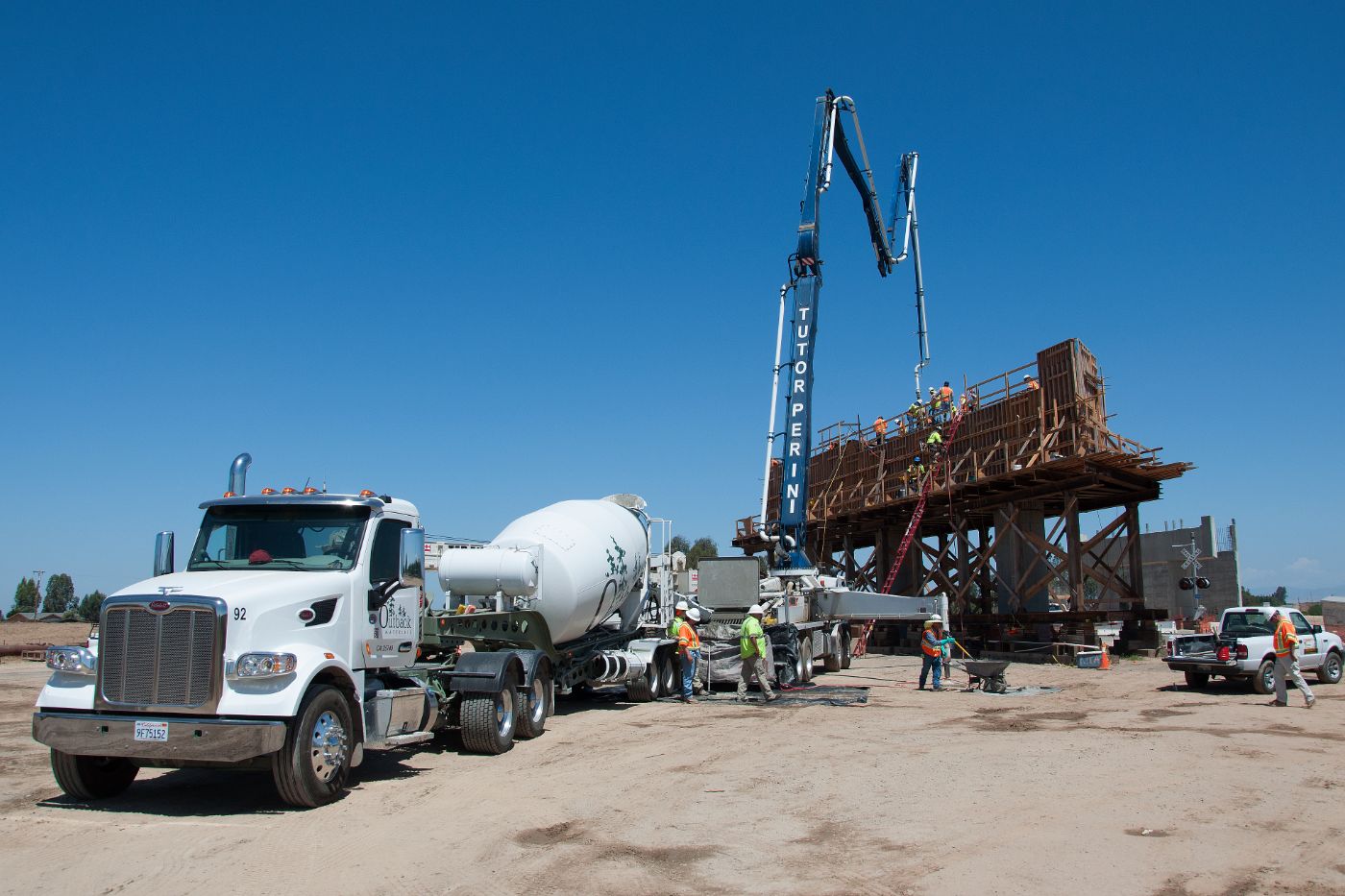
Road 27 Grade Separation
A lot of activity can be seen at the northern boundary of Construction Package 1, where crews are getting closer to completing the Road 27 overcrossing. Dispatched workers were busy pouring concrete for the final supporting bent on the south side of the railroad tracks. A bent is composed of a column and cap element that the girders rest on. So far, the retaining wall on the south side of the bridge has been completed.
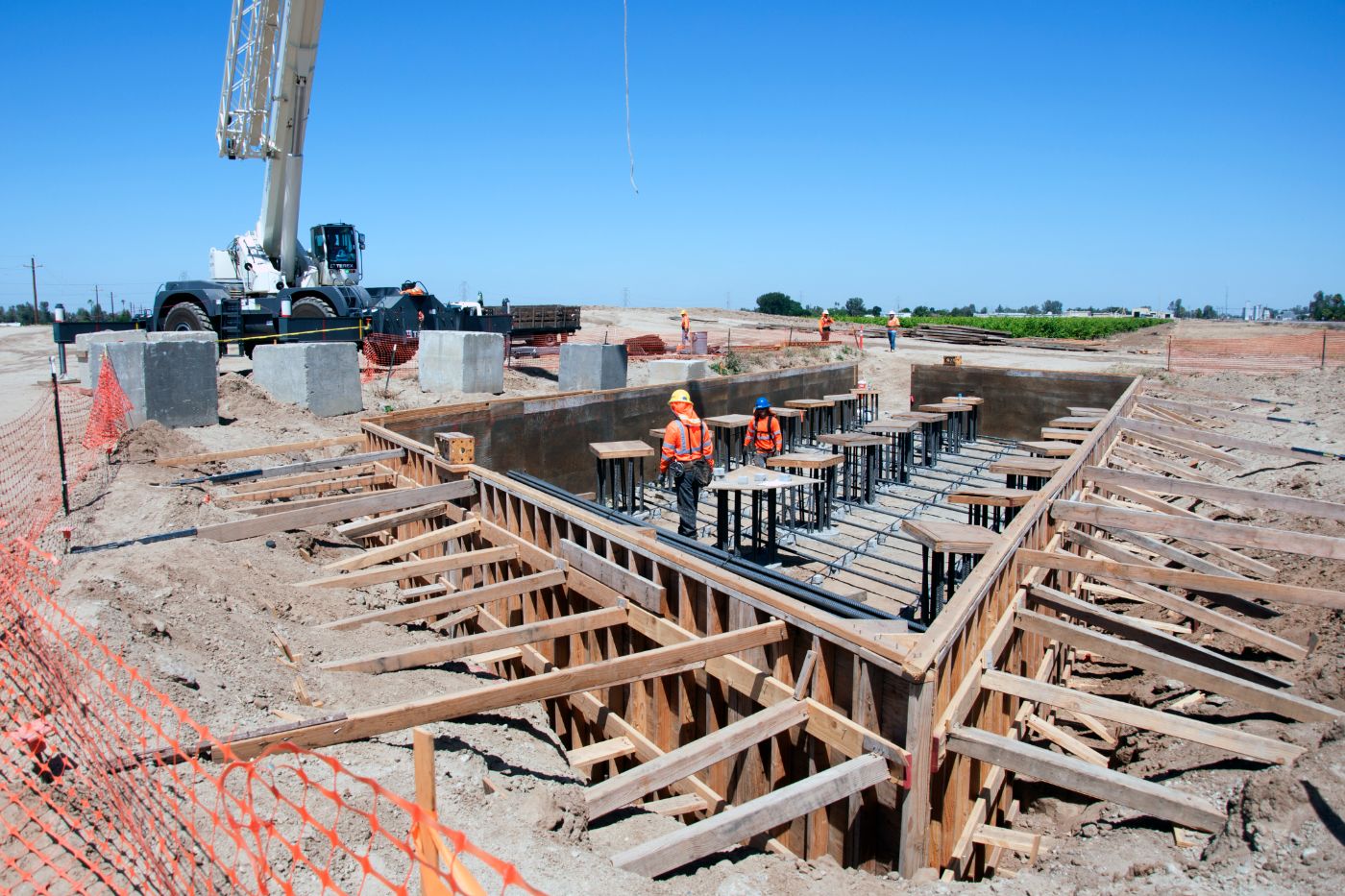
Avenue 15 Grade Seperation
Ironworkers have been hard at work setting forms and installing reinforcing rebar on the west abutment footing of the Avenue 15 overpass in Madera County. Towards the east side of the structure, drilling for the cast-in-place wall foundations that extend from each abutment is also underway. Columns for a bent have been poured and falsework will be constructed next to form the bent cap that will support the superstructure elements, such as the pre-cast girders and concrete deck.
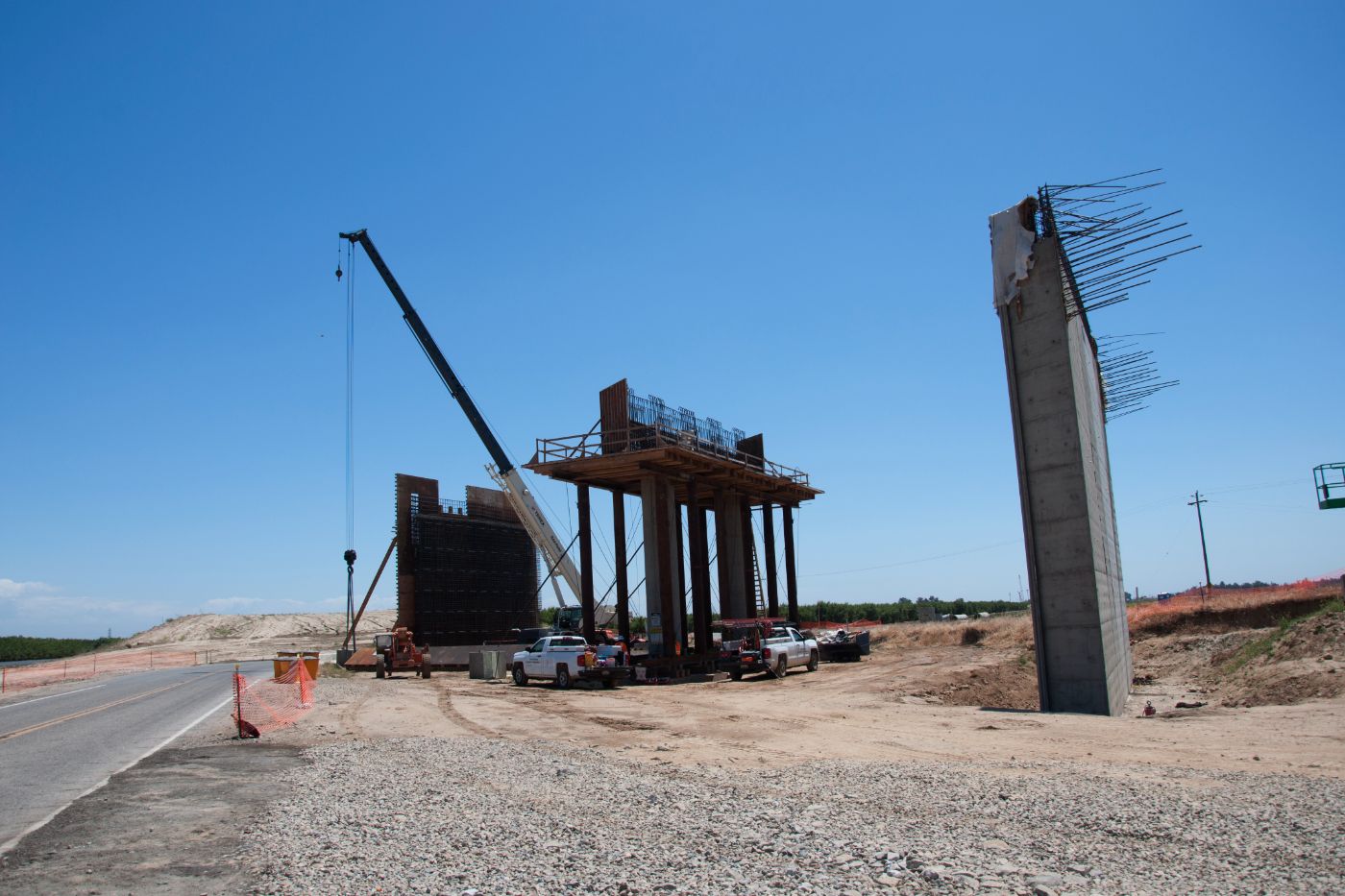
Avenue 7 Grade Separation
At Avenue 7 and Road 33, the abutment walls are taking shape as crews tie the rebar that will make up the interior of the abutment. The substructure is expected to be completed by the end of the month for this crossing that will straighten out Avenue 7, while realigning Road 33 and cross over the high-speed rail tracks east of State Route 99.